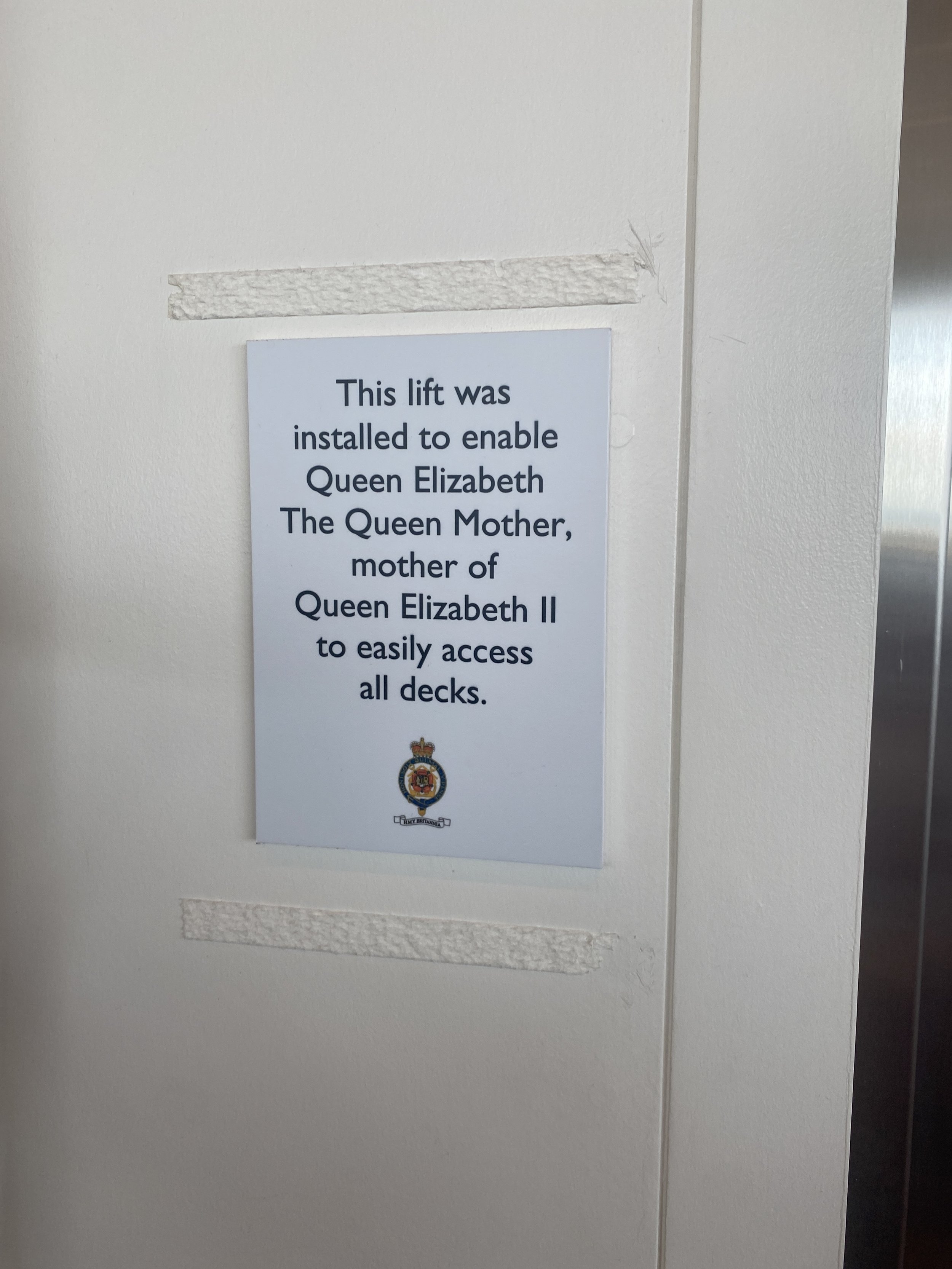Our hotel lobby—there is an elevator to the left of this photo, as well as one a few steps away.
When I was planning the trip (and more on this tomorrow), one of the things I realized quickly was that not all hotels in Scotland have elevators. I was expecting to have to look for a place with air conditioning, but not elevators
There is no Americans with Disabilities Act equivalent in the UK. Many historic buildings (you’ll see this as “Grade 1” or “Grade 2” on websites) can’t be adapted to have elevators.
There was no way I was booking a hotel without an elevator.
The Scotsman Hotel, where we stayed, did have an elevator (two!) and air conditioning. It checked all our boxes in terms of accessibility.
(Air conditioning was necessary because one of the things that can stress out blood glucose is temperature changes. Since it ended up being unseasonably warm, and since most buildings in Edinburgh do not have air conditioning, it was very nice to get back to the room and cool down a bit.)
The elevators did tend to be smaller than American elevators, so if you use a wheelchair, you’ll want to call and check elevator dimensions. But if you use a walker, cane, crutches, etc., I think you’ll be fine.
Restaurants/Stores/Attractions
Most websites will say if they are accessible—either a lift, a ramp, or something they can bring out (like a portable ramp.) Some places are not accessible, and they may or may not say that. (Eteaket’s website, for example, doesn’t note that this is how you enter the tea room.)
The entrance to Eteaket is down this small flight of stairs. The website does not note this.
Some places might have no stairs, but it’s a tiny entrance—Ginger Twist Yarns was that way. (The entire shop is tiny!)
As I noted in the Edinburgh Castle entry, you may or may not have access to the mobility vehicle at the castle. Decide if the risk of not having it is worth pre-booking tickets, or if you just want to take your chances and visit without reserved tickets.
At the Palace of Holyroodhouse, there is the secret elevator, and it’s easily accessible by asking a staff member to escort you there. I’m guessing that to get out of the castle you’d also take this elevator back down—I took another staircase out.
Britannia is highly accessible. There is an elevator (two, in fact). You can ride like the Queen Mother!
There are audio guides at Britannia and the Palace of Holyroodhouse. At the Palace of Holyroodhouse, there are ones with British Sign Language (BSL) interpretation. Here are all of Britannia’s accessibility notes—they even have ASL guides in addition to the BSL ones! I did not know that! They also include dimensions which I think is really helpful.
The National Gallery had elevators, which was very helpful. Here’s the accessibility info for all the National Galleries of Scotland (the National Gallery, Portrait Gallery, and Modern One and Two.)
And some things are just flat out not accessible, like Camera Obscura (A very popular tourist attraction). There’s no elevator, and it’s not wheelchair accessible.
Cabs:
I noticed that many of the City Cabs we used had a telecoil function—fabulous! I didn’t have to use it because I was with Amilia, but I loved that. I’m not sure what there is in terms of wheelchair accessible cabs—their website says all cabs are wheelchair accessible, but I didn’t actually have to test this.
One of the reasons we took so many cabs is that, while things seem close on the map, the topography of Edinburgh is very hilly. If you’ve been to Pittsburgh, imagine Pittsburgh on steroids, and you’re close. I had good shoes, so when we did walk, my muscles didn’t complain and I never felt sore or painful, foot or leg wise, when I was in Scotland (win!). But I also know my own limitations and so taxis were the way to go, most of the time. Yes, we had a cabby comment on this: “Oh, you can just walk this!” I do not care. Take my money, cabby.
(For example, to get to the National Gallery, which was quite close to our hotel, one would have to walk up Market Street, which becomes rather steep, and then down it to reach the National Gallery’s main entrance—then repeat this, on the way back. Not a far walk, but a demanding one.)
Airport:
Edinburgh Airport is small. It’s different than American airports in that it’s not quite as “direct”—you don’t walk in and see the check in desks, you don’t walk out and see a taxi stand right away. But there are lots of places to sit, there is a telecoil system in the airport, and they even have these lovely things….
These are staffed—so helpful—and have comfortable chairs! They are also right by the gates so it’s not like you’d have to book it to get to your gate when it was your turn to board. This is such a good idea!
If you have other questions about accessibility, please drop them in the comments, and I’ll do my best to answer them! I might do a round up post of all the places we visited with links to their accessibility pages, if people would find that helpful. Let me know!




